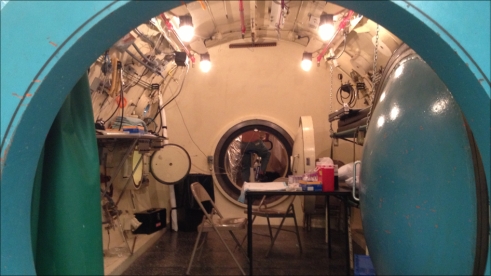This week, in collaboration with the Duke Center for Hyperbaric Medicine and Environmental Physiology, members of the Xtreme Everest 2 team are simulating next Spring's trek in Nepal. Six brave volunteers are spending 72hrs in the confines of the North Carolinian chamber, set to follow the same ascent profile as the XE 2 trek to Namche Bazaar, with a variety of blood, buccal, urine and exercise tests en route. The volunteers will also undergo muscle biopsies.
Views from inside certainly are not up to scratch compared to the mighty Chomolungma (we left them a photo album inside from the 2007 trip to see what they are missing out on). However it is the caffeine ban that has been causing the biggest concerns so far!
The chamber tests will study epigenetics during ascent, ie the changes in our genetic expression resulting from the exposure to low oxygen levels at altitude. Other tests will study circulation changes using laser doppler. Three seasoned US mountaineers who have spent much of their working lives at altitude will be compared against three lowland athletes. The study will be repeated in February 2013.
The volunteers are monitored throughout for the early signs of acute mountain sickness, with investigators wearing oxygen hoods to maintain sea level oxygen levels whilst collecting data on the hypoxic volunteers. Xtreme Everest are extremely grateful to all our collaborators and volunteers for their support of this research.
Written by Dr Tom Smedley
Created 10th Dec 2012 |





 Duke chamber studies
Duke chamber studies